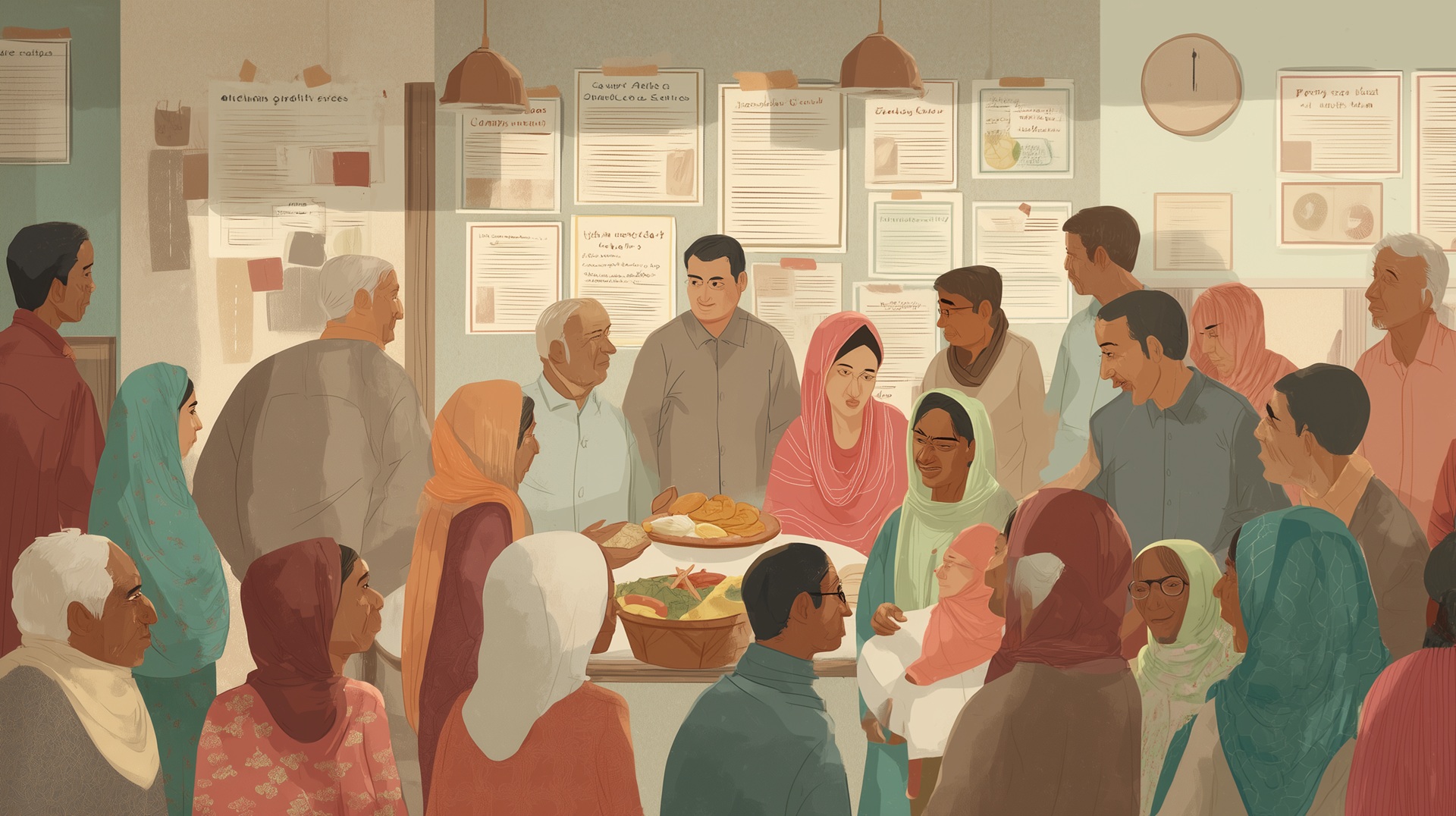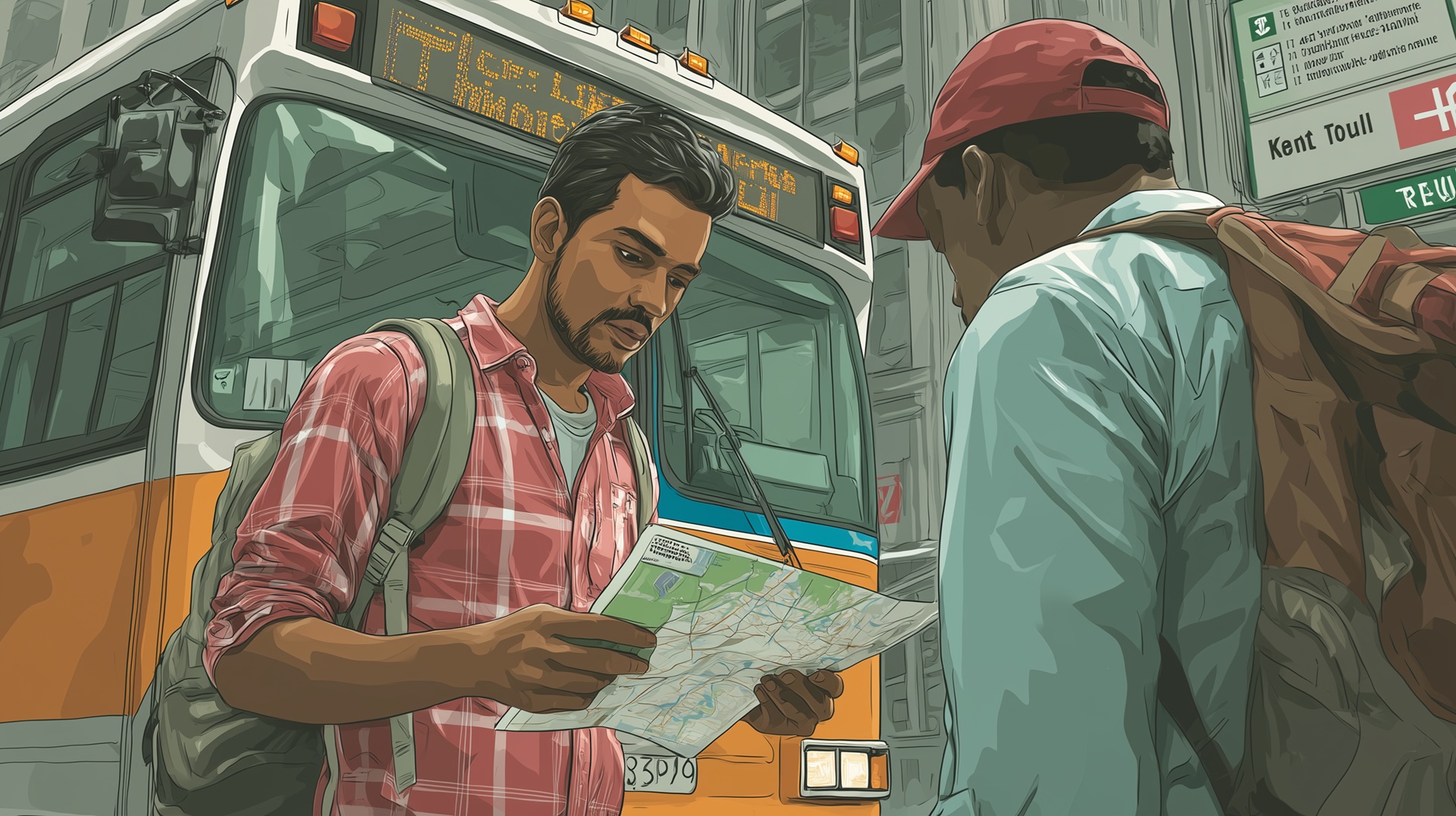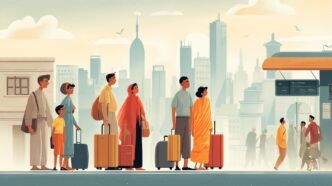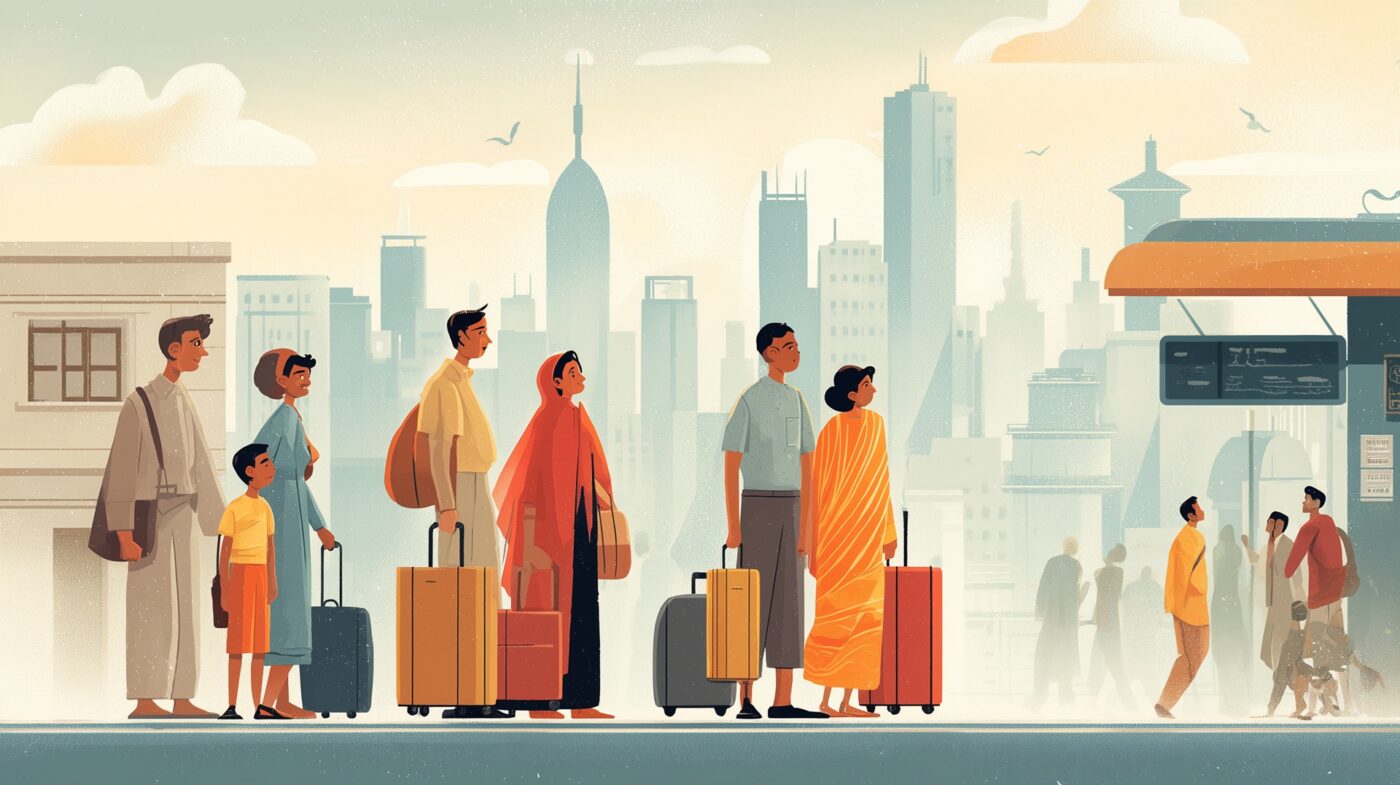Setting foot in a new country is a leap into uncertainty. For many first-time immigrants from Bangladesh, the moment is layered with anticipation, hope, and a shadow of disorientation. Life back home was predictable in its rhythms—the aroma of familiar spices, neighbors whose faces you had known since childhood, a shared understanding of how to act and what to say in nearly every context. But in a new land, those comforts can seem distant. The smallest gestures need decoding, and every day brings a new challenge in language, work, and even basic daily habits. Culture shock, then, is not only a psychological hurdle; it is a practical, lived reality. This journey of adjustment, however, is also an opportunity—to grow, to build, and to find a new sense of belonging. We navigate some of the culture shocks first-time Bangladeshi immigrants face when they move to a different country.
At the core of the Bangladeshi immigrant’s journey with culture shock lies a simple tension: the familiar clashing against the unknown. The story begins in Bangladesh, with its slow mornings and slow cups of tea, sprawling cities like Dhaka buzzing with energy, and rural areas steeped in tradition. Every aspect is grounded in a deep sense of community. Family is paramount—elders are respected, advice is given freely, and nearly every significant decision involves the extended clan. Hierarchy is implicit in conversation, gestures, and even the way you pass a plate of food. Communication, too, is careful and indirect. Confrontation is rare; people often couch criticism in kind words, hinting rather than stating, so as to avoid loss of face. Religion is ingrained in the rituals of everyday life—prayers punctuate the day, and festivals are reminders of a shared history; their presence lingers in the laughter and the food at family gatherings. Even in urban centers, where global culture is seeping in, these foundations remain strong.
The leap to a new country upends this foundation. The place itself might be colder, the rules different, the streets unfamiliar. Suddenly, small talk with a stranger is expected, and social hierarchy seems less visible—first names are used, opinions exchanged openly. Individualism is prized; classmates and co-workers may value personal achievement over group consensus. The concept of “personal space” shifts; what felt friendly at home now seems intrusive, or vice versa. The fabric of daily life—how and when to eat, whom to greet, how to queue for the bus—runs on a logic that must be learned from scratch. Even the familiar can be distorted: the mangoes are different, the familiar festival is celebrated quietly, the rules for negotiation at work are rewritten. For many, these changes are not simply academic—they touch identity at its deepest level.
This is culture shock—not only a phase, but an ongoing negotiation between the old and the new. At first, the differences are a thrill. The so-called “honeymoon period” is real: the city lights are brighter, the restaurants tantalize, and the future appears limitless. It is easy to admire how things “work better” or “look nicer.” But soon, reality returns. The language barrier becomes more daunting; local customs chafe; the food doesn’t taste right. It might feel as if every small victory—ordering a coffee, getting on the right bus, understanding a joke at a party—requires all your strength. Isolation grows. At this stage, frustration is common. This cycle is not unique: graduates, professionals, or new families alike all pass through these waves of emotion, sometimes circling between them, sometimes lingering in a single phase for months before integration finally comes.
Yet, the ability to adapt is woven into the immigrant experience. Success depends less on an unshakeable personality and more on the willingness to participate in a process—learning new rules, absorbing language step by step, and letting go, bit by bit, of the certainty that comes with the known. The process is neither easy nor predictable, but it is possible.

Navigating culture shock as a Bangladeshi immigrant and building a foothold in the new world begins with connection. Community provides the first line of support against the unfamiliar. For Bangladeshis, this means finding local cultural organizations (like the Bangladesh Association of America), seeking familiar faces at religious centers, or joining a network online. These first contacts are not just about comfort food and shared language, though those help. More importantly, they are places to share information about navigating schools, jobs, or social norms. The presence of others who have already made the leap reassures new arrivals that the challenge is not insurmountable. Yet, integration also requires reaching beyond the ethnic enclave. Local immigrant services offices are often a gateway to language classes, counseling, legal aid, or job referrals. Talking with neighbors, joining volunteer programs, or even participating in multicultural events begins to build the bridges needed for longer-term adaptation.
Language is both barrier and key for navigating culture shock as a Bangladeshi immigrant. The challenge is not only a matter of vocabulary and grammar. It is the subtle signal sent when greeting a stranger, the ability to grasp a joke or infer a rule without being told. For Bangladeshis, whose communication style at home is often indirect, learning a more direct approach can be unsettling at first. The struggle here isn’t only about pronouncing new words; it is about discovering a new voice, one that fits within the rules of the host society. Every language practice session, every hesitant question at the market, is a step toward connection. Formal classes provide a foundation, but everyday interactions—watching local TV, reading bus ads, chatting with a classmate—build true fluency.
The journey is not about abandonment of one’s identity. To endure, immigrants must find ways to maintain their own culture. For many, the preservation of language, holidays, and food is essential—not a luxury, but a necessity. Cooking a traditional meal for friends, teaching children Bengali, gathering for Pohela Boishakh, or introducing Eid traditions to local neighbors are ways of keeping the anchor secure. For children especially, this balance can be delicate; they move more quickly between languages and codes, often serving as interpreters for their parents, yet they may feel pressure from both sides. Embracing this dual identity—neither fully here nor fully there, but part of both—is a long and sometimes painful process that, over time, can become a source of strength.
Practical hurdles are part of the package. Finding work at one’s skill level is rarely straightforward. Professional degrees or experience gained in Bangladesh are not always accepted or understood by employers in the host country. This forces many to start again—taking jobs below their training, seeking new qualifications, or meeting unfamiliar expectations in job interviews. Frustration and financial strain are common, particularly for those supporting families or sending remittances home. Yet, many persevere. Success stories echo across the diaspora—of entry-level workers who become entrepreneurs, or parents who begin again for the sake of their children’s future.
Daily routines themselves must be rebuilt. What was once simple—going to the doctor, signing a lease, or understanding tax paperwork — now involves learning an entirely new set of rules, documents, or unspoken customs. Tasks as mundane as paying for groceries, taking a train, or greeting a neighbor can become small arenas of anxiety and experimentation. Here, patience is vital. Each day, each attempt, becomes a lesson: how to queue, how to register for healthcare, how to react if someone bumps into you on the street. In these repetitive acts, a new sense of comfort gradually grows.
Not every culture shock faced by Bangladeshi immigrants is external. Emotional struggles can run deep—homesickness, fear of the unknown, and the burden of high expectations. Family far away tugs at the heart, and the inability to return quickly adds urgency to each setback. Loneliness is real, particularly for those arriving alone or starting over in midlife. Stigma around mental health support compounds the problem for some, making it harder to ask for help. Recognizing that these feelings are common, and that professional help is available, is a crucial step. Community organizations and culturally sensitive counselors can be invaluable guides, offering confidential advice and a path to resilience.
Negative experiences are sometimes part of the territory. Discrimination—whether subtle or overt—can rear its head. For Bangladeshis, prejudices may focus on ethnicity, language, or religion. Microaggressions in the workplace or school, misunderstanding of cultural practices, or outright bias in housing or hiring can be discouraging. Learning about one’s rights, and seeking allies becomes critical. No one should face such challenges in isolation. Reaching out, documenting issues, and connecting with advocacy groups helps fight back against injustice and builds a wider sense of community.
Despite hurdles, many first-time immigrants from Bangladesh find ways not only to survive, but to thrive. The key is often a flexible mindset—a willingness to learn, adapt, and hold fast to what matters most. Take the example of Rahman. He arrived in a big city, his English halting, his professional experience set aside for now. He started with small jobs, cleaning offices at night, while spending days learning the local language and interning at community events. Gradually, he gathered the tools to move forward—an upgraded certificate, local work references, and a handful of connections. The path took years. Success was not earned through sudden leaps but by a thousand small acts of courage: asking for help, joining new groups, applying for another job, and believing that integration—while never complete—was possible for him as well.
His journey is a reminder that the process does not end; it deepens. The choices made—whether to adapt or insist, to reach out or retreat—reverberate through families and communities. For many, integration is not about total assimilation or the erasure of self, but a negotiation. Over time, the bitter taste of the unfamiliar becomes a memory; the rhythm of new holidays, routines, and habits takes hold. The individual, once a stranger, becomes deeply familiar with two worlds, able to offer insights to both.

For newcomers, patience with oneself is essential. The early days will be full of missteps, misunderstandings, and quiet victories. The sense of identity may fluctuate, loyalty divided between homeland and new land. But every stage, from excitement to frustration, from confusion to acceptance, is a natural part of the journey. Opening up to others—both fellow Bangladeshis and people from the host culture—builds the foundation for a new sense of home.
For host communities, welcoming newcomers means more than tolerance. It means active curiosity—asking questions, sharing food, learning a new story. When connections take root, the boundaries between “us” and “them” soften, replaced by shared experiences, laughter, and simple acts of help. Over time, isolation gives way to shared purpose. The city or town changes, bit by bit—an unfamiliar festival becomes a local street party; familiar flavors become everyone’s favorites.
The process of adjusting to culture shock as Bangladeshi immigrants is ongoing, sometimes circular, and always deeply personal. It is shaped by history, language, community, and the practical realities of daily life. For Bangladeshi immigrants, the adjustment means holding onto core values—respect for family, community ties, religious rituals—while finding the courage to experiment, make mistakes, and adapt to the rules of a new home. Each day brings new obstacles, but also new opportunities to connect, to learn, and to build a different, richly layered identity.
This journey is not an easy one, and struggles are real. Yet, the resilience and adaptability that carries Bangladeshis across continents are powerful tools. From first arrivals to long-established residents, the story is about roots and wings—about carrying something precious across borders, and daring, over time, to plant it in unfamiliar soil. In this way, culture shock becomes less a wall than a bridge—difficult to cross, but offering, to those willing to travel, a new vista on the landscape of possibility.







